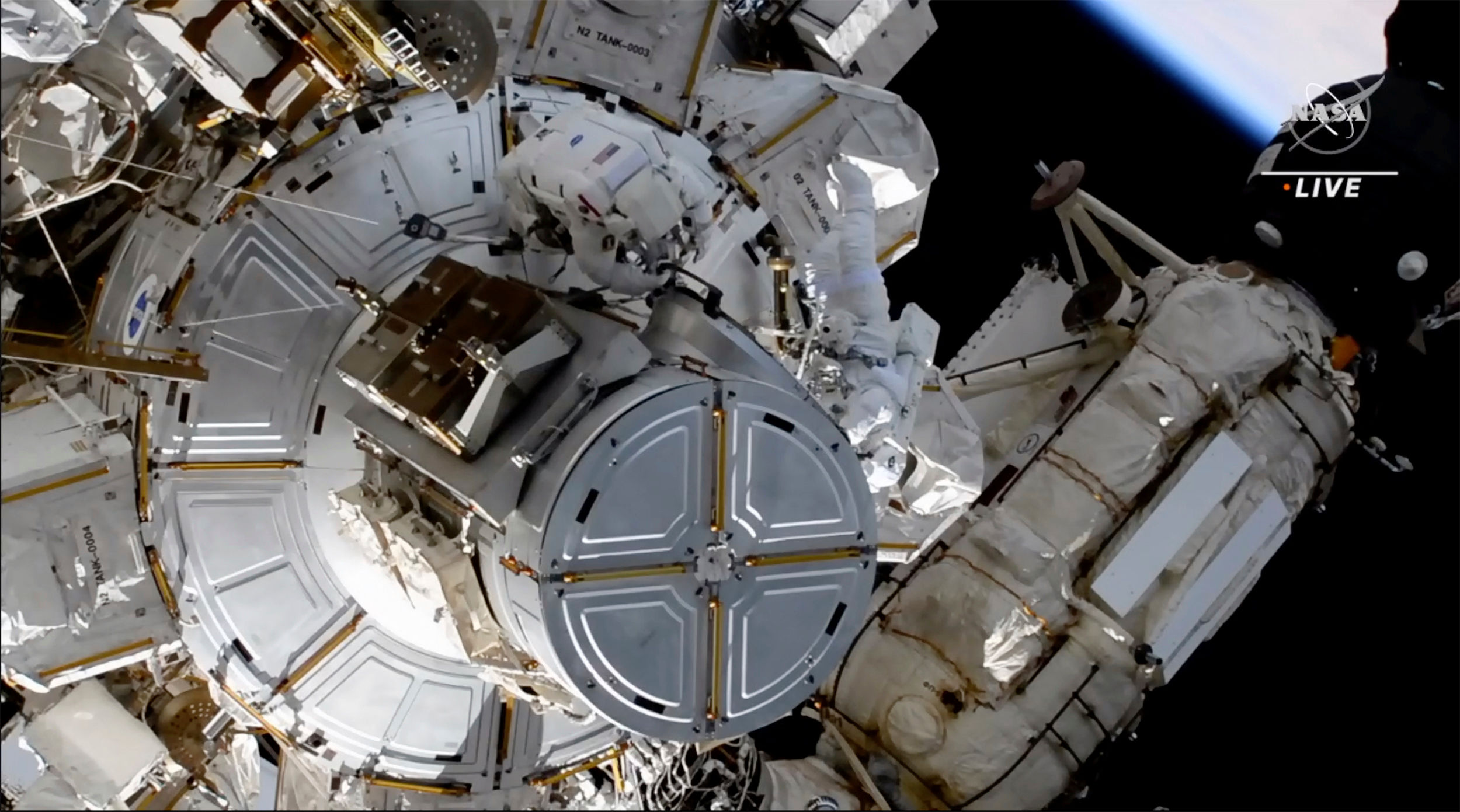Ever wondered how fire behaves in space? Some Indian researchers at the Indian Institute of Technology (IIT) Madras have developed an algorithm that can help determine the outcome. The algorithm works with drones and helps in analyzing the behaviour of fire in space shuttles and stations.
According to the researchers, a multirotor microgravity platform was used to create a moon-like environment in terms of reduced gravitational force to experiment with the algorithms. Achieving microgravity is currently possible only through space stations, satellites, space shuttles, sounding rockets, and drop towers. These resources are beyond the reach of most educational institutions in India, the team noted.
Also Read: In amazing NASA picture, International Space Station seen transiting the Sun
“These algorithms and techniques for multirotor UAV control could accurately maintain its acceleration. Although multirotor UAVs currently do not have high payload capacities, they are readily available at a low cost, making them accessible to all. We have conducted flight tests using a quadrotor and a hex rotor that we developed and found that those flights attained stable and high-quality microgravity levels,” Kedarisetty Siddhardha, research scholar, Department of Aerospace Engineering, IIT Madras told PTI.
“Another option is to use ‘free-fall’ flights on Earth to create microgravity. The free fall of sounding rockets and free fall of payloads from high altitude balloons and drop towers can also enable microgravity,” he added.
Siddharth further noted, “These microgravity platforms provide stable and high-quality microgravity. However, it takes a few months to years to gain access to any of the existing microgravity platforms. Moreover, the cost to access these platforms’ services is not affordable by many educational and research institutions.”
Also Read: No rest in space: Chinese astronauts record their hectic day in station
The team has developed an algorithm that can precisely control multirotor Unmanned Aerial Vehicles (UAVs) such as quadrotors or drones. The team has published this research in reputed peer-reviewed international journals, including Aerospace Systems, Aerospace Science and Technology, and Microgravity Science and Technology.
“The research team showed that existing quadrotors could be turned into microgravity platforms via minor design modifications and appropriate control, estimation, and automation algorithms. Furthermore, the methods and algorithms developed by us for turning multirotors into microgravity platforms are generic. So, they can be replicated easily to create multirotor microgravity platforms with high payload capacities,” Siddhardha added.
The two multirotors that the team built and flew are the first UAVs to conduct on board experiments in microgravity. Earlier, efforts by other researchers to make UAVs as microgravity platforms did not see much success as those platforms could not attain gravity levels close to zero.
“While most conventional microgravity platforms can simulate only microgravity, a multirotor microgravity platform can also simulate reduced-gravity environments like that on the Moon and Mars.
The team has carried out experiments on board his multirotor microgravity platforms to observe capillary action as well as the change in the shape of the liquid meniscus in microgravity.
“All it takes is a change in one parameter in the software that Siddhardha embeds in his multirotor that autonomously performs the manoeuvres required to achieve the level of gravity needed,” said Joel George Manathara, Assistant Professor, Department of Aerospace Engineering, IIT Madras.
“These experiments undoubtedly prove that multirotors can be turned into platforms on which microgravity experiments can be carried out. Nowadays, almost every educational institution has a robotics lab or a flying club with multirotors. Thus, this research opens up the possibility of conducting experiments in microgravity at every university in India,” Siddhardha said.







